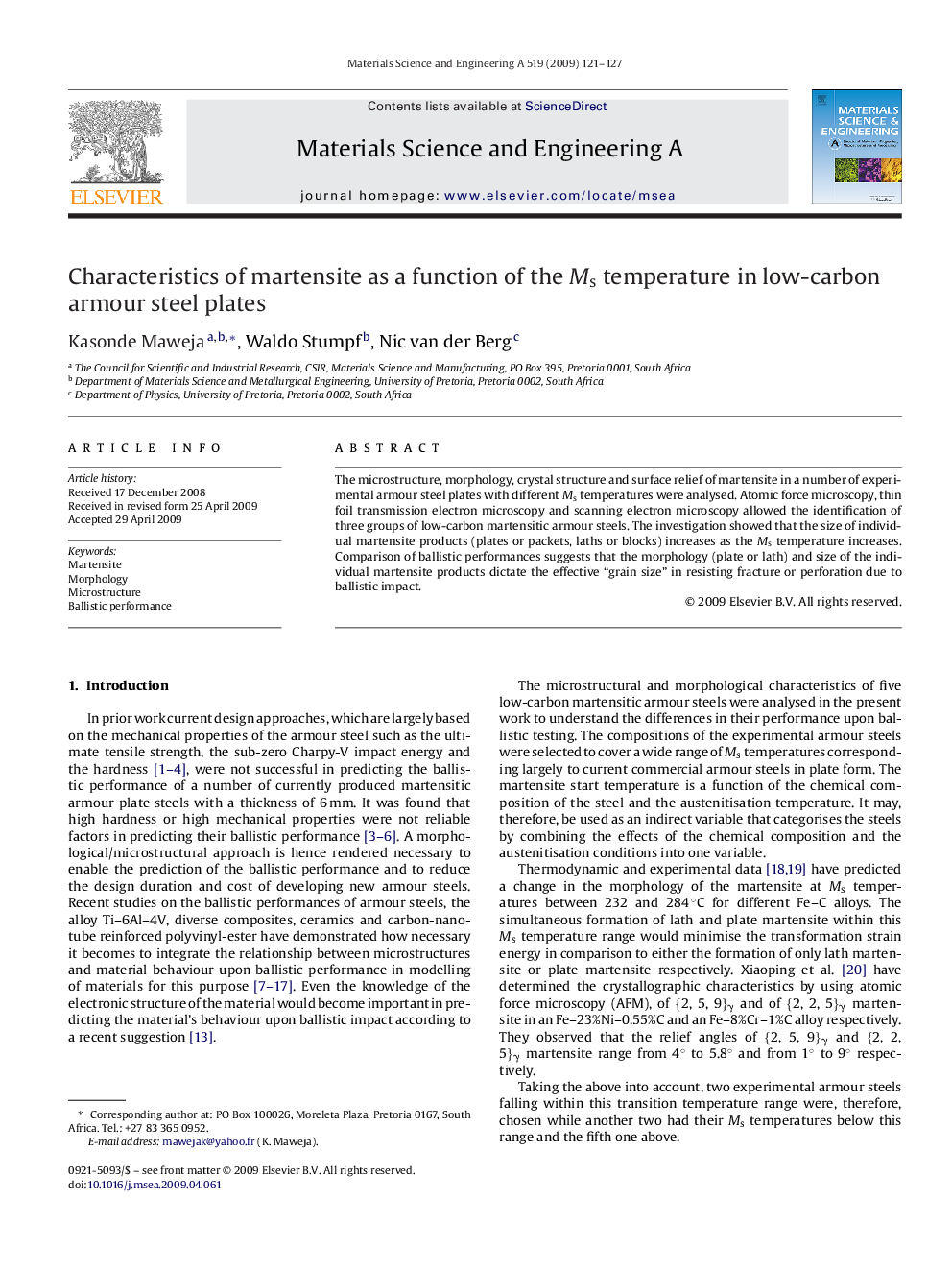| Article ID | Journal | Published Year | Pages | File Type |
|---|---|---|---|---|
| 1580388 | Materials Science and Engineering: A | 2009 | 7 Pages |
Abstract
The microstructure, morphology, crystal structure and surface relief of martensite in a number of experimental armour steel plates with different Ms temperatures were analysed. Atomic force microscopy, thin foil transmission electron microscopy and scanning electron microscopy allowed the identification of three groups of low-carbon martensitic armour steels. The investigation showed that the size of individual martensite products (plates or packets, laths or blocks) increases as the Ms temperature increases. Comparison of ballistic performances suggests that the morphology (plate or lath) and size of the individual martensite products dictate the effective “grain size” in resisting fracture or perforation due to ballistic impact.
Related Topics
Physical Sciences and Engineering
Materials Science
Materials Science (General)
Authors
Kasonde Maweja, Waldo Stumpf, Nic van der Berg,
